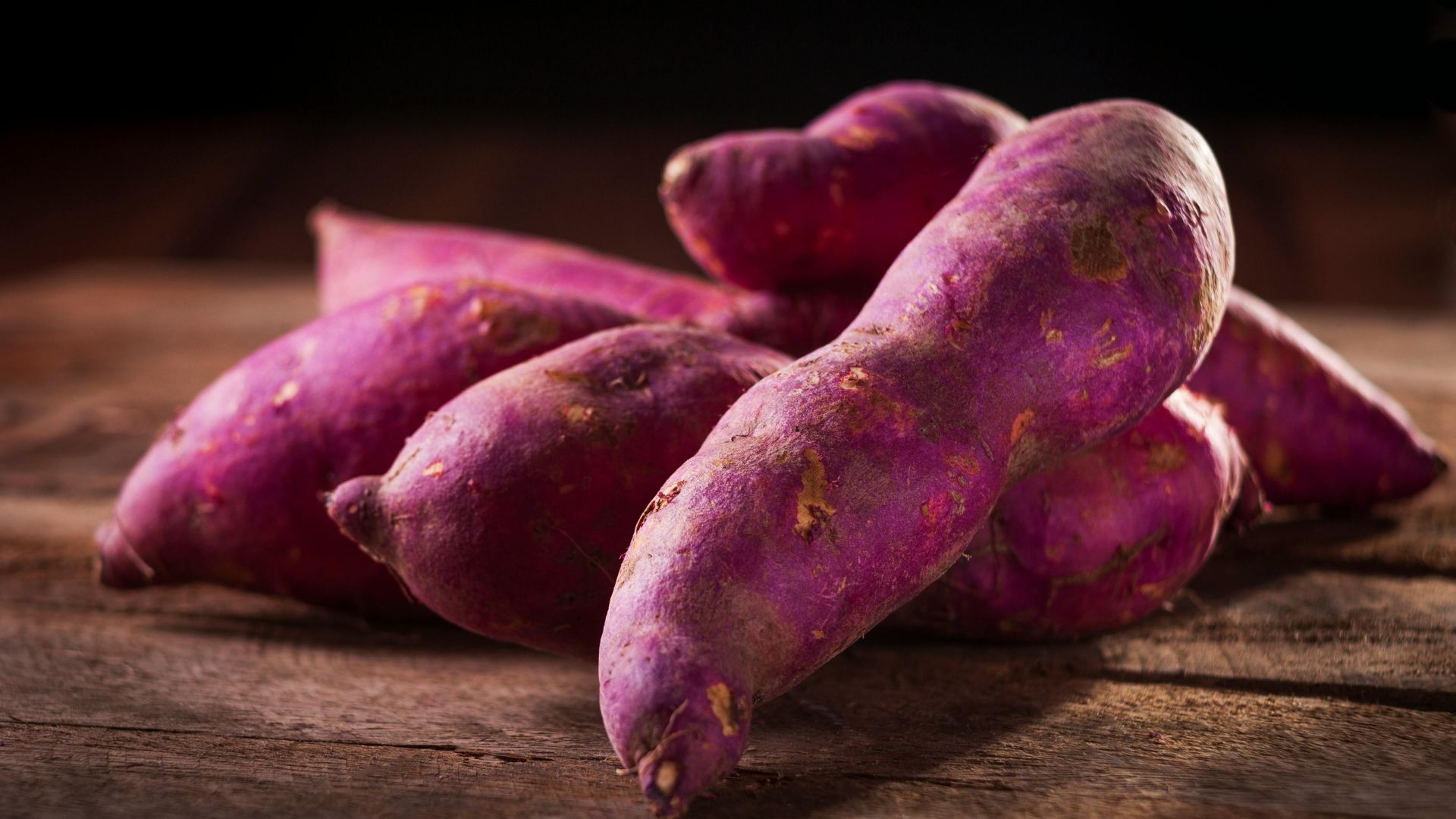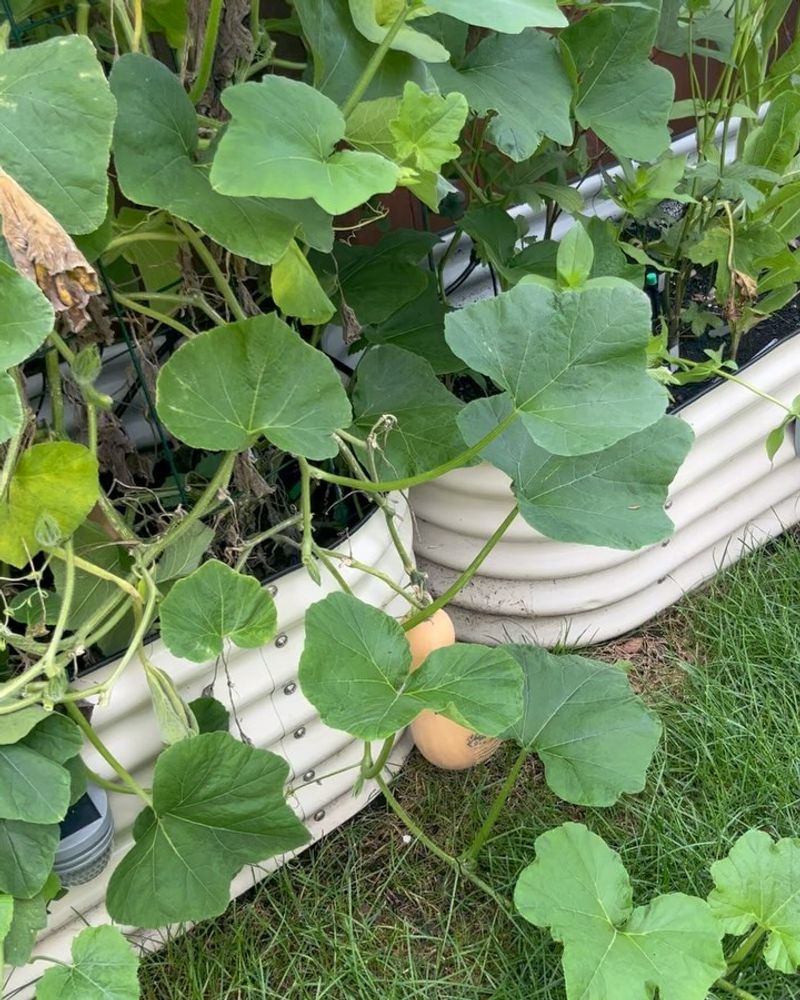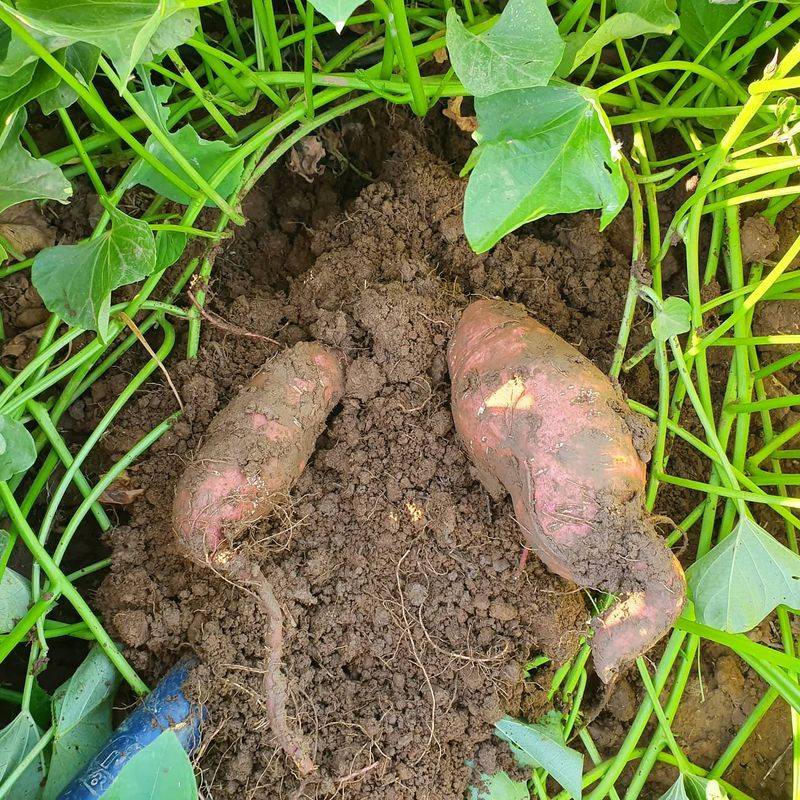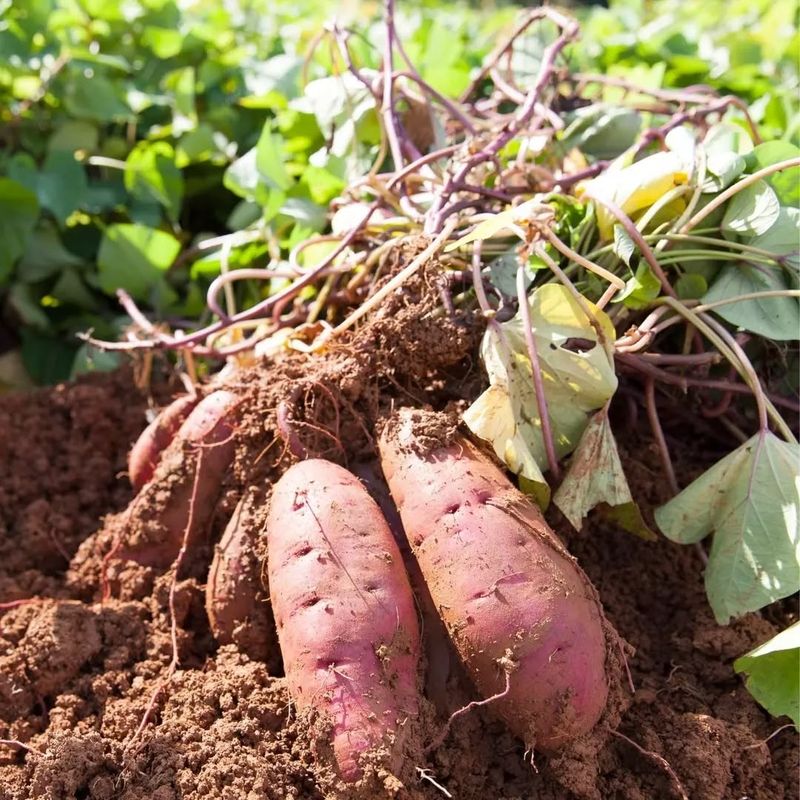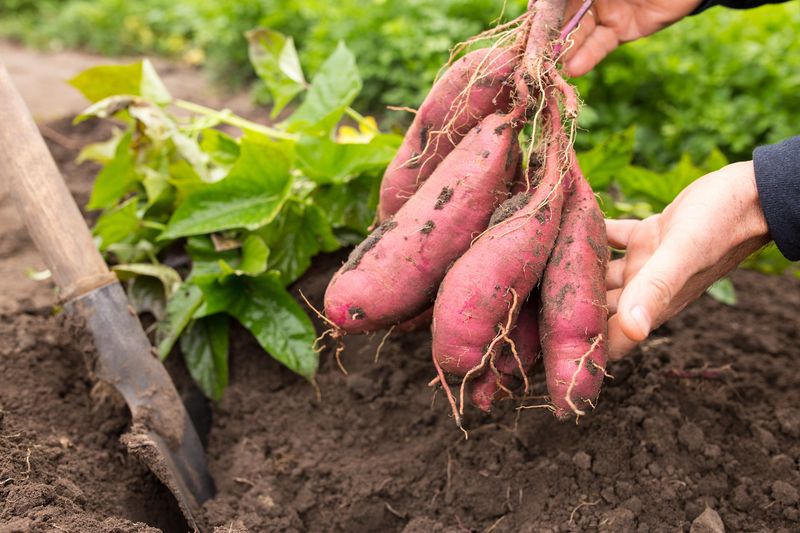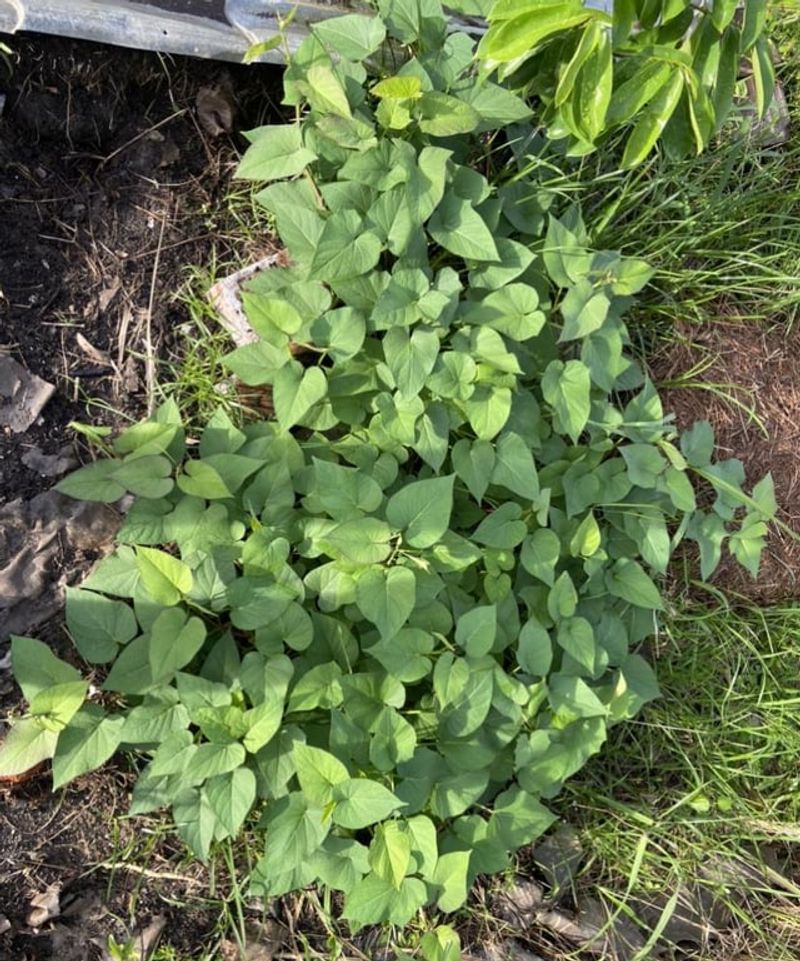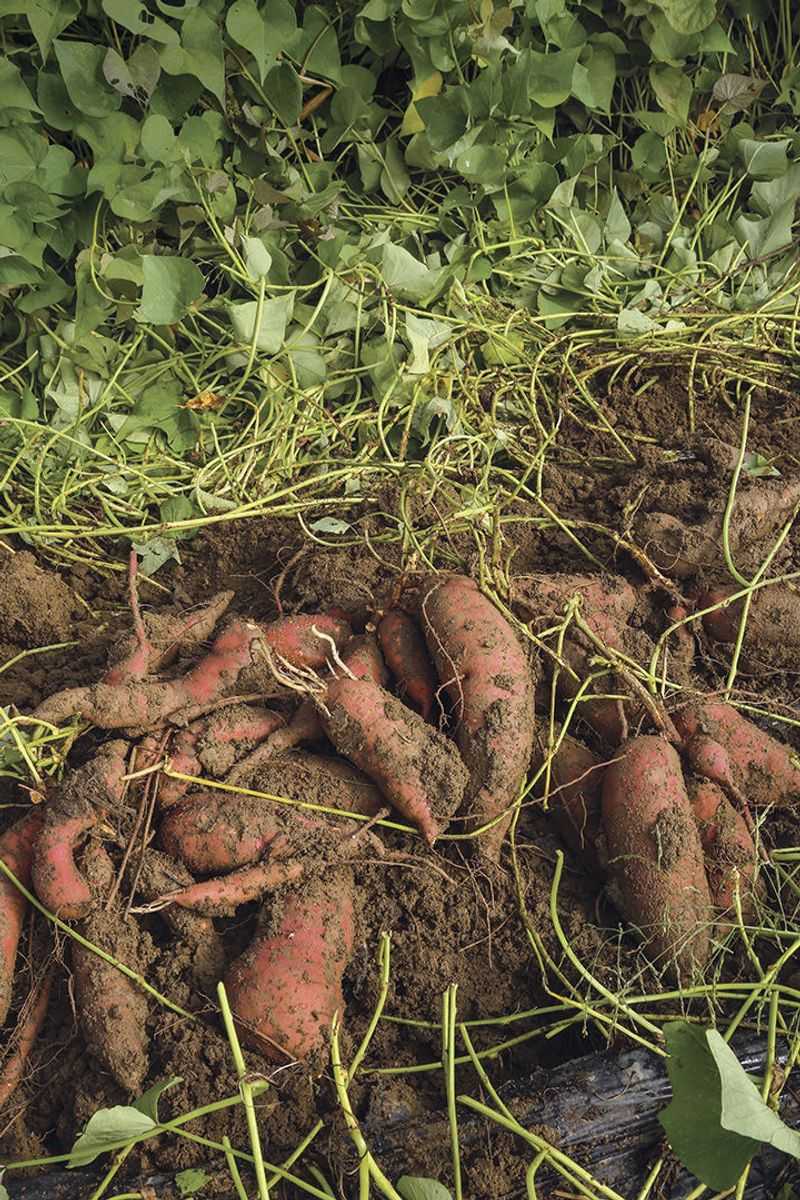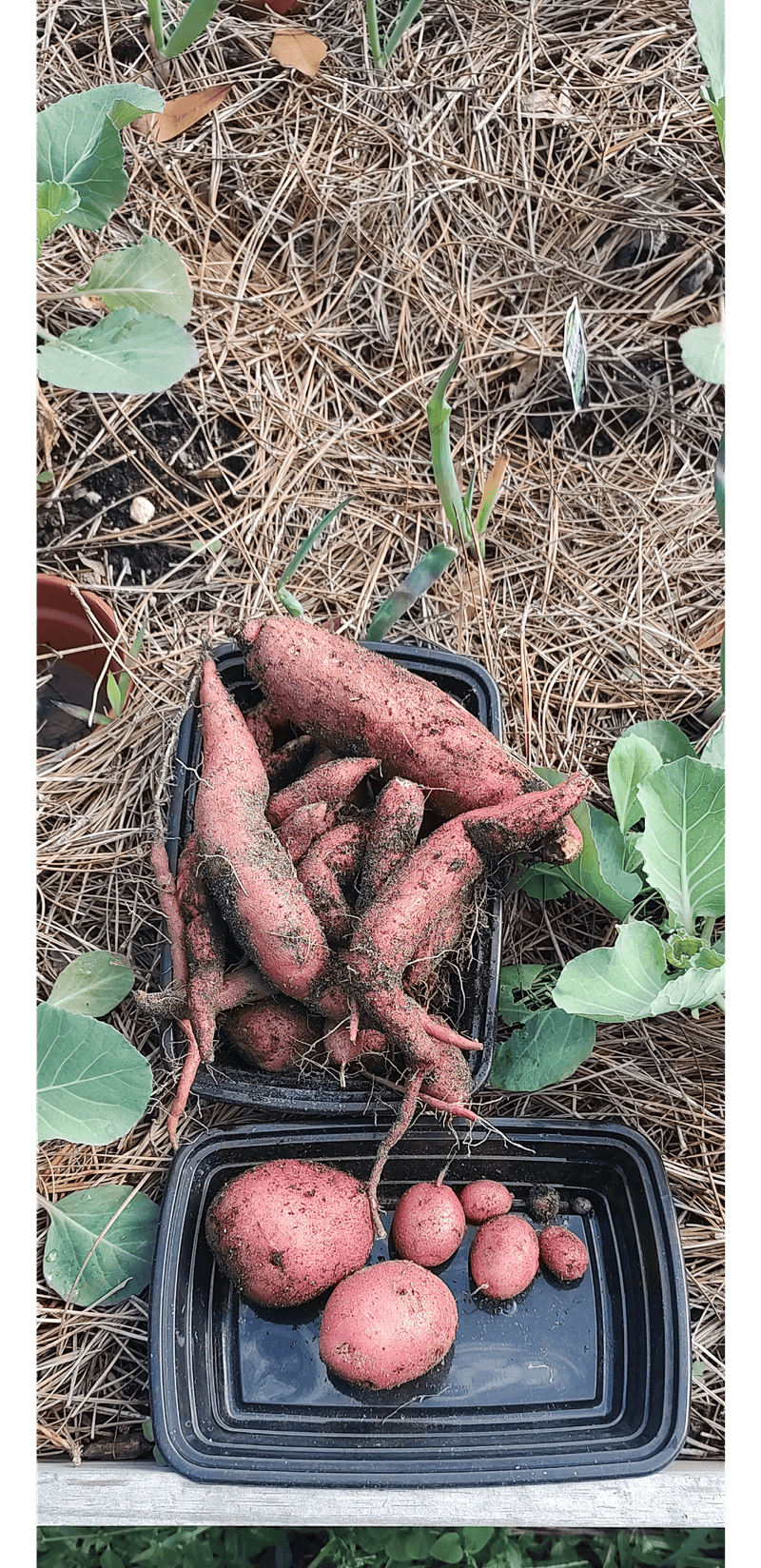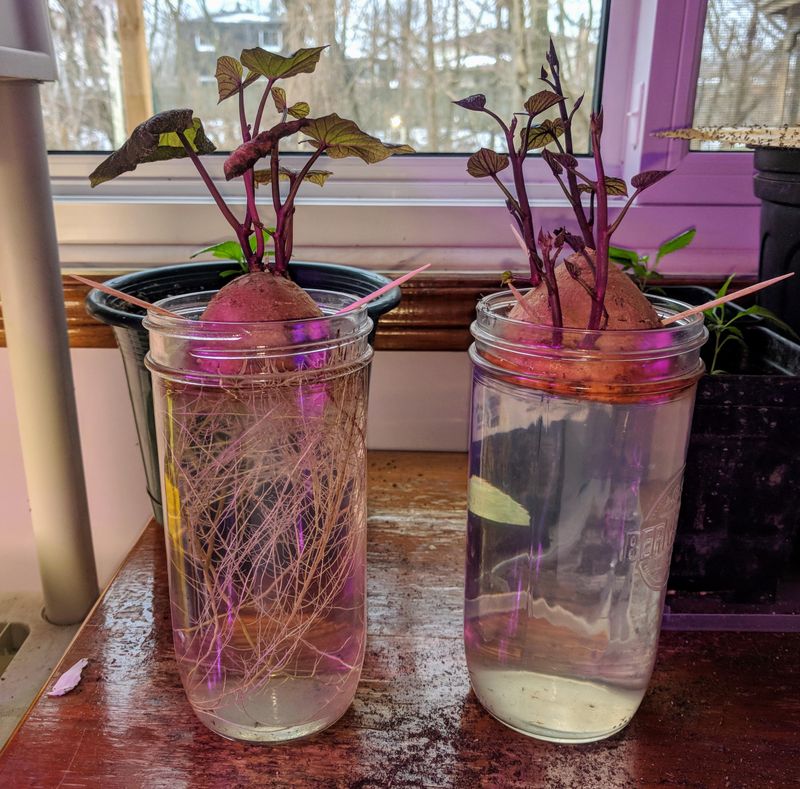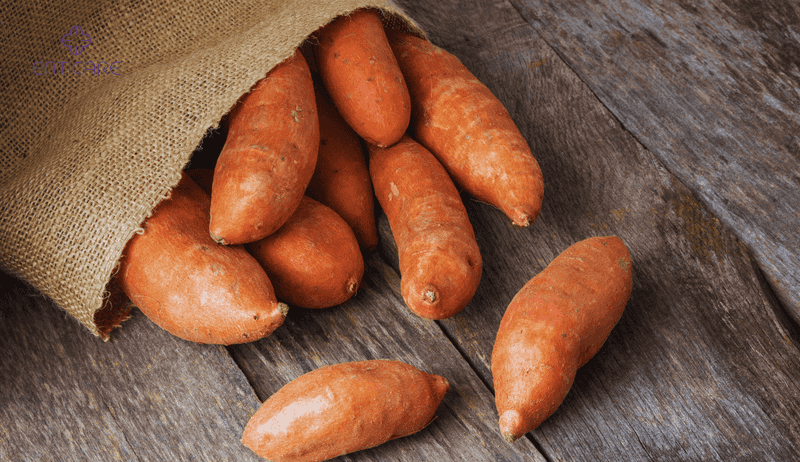Growing sweet potatoes sounds easy enough, right? Stick a slip in the soil, give it some sun, and wait for the harvest. But as I learned the hard way—there’s a bit more to it than meets the eye. There are some bumps along the way that gardeners don’t always talk about.
I found myself Googling “why aren’t my sweet potatoes bulking up” more times than I’d like to admit.
So, before you dive in, take a moment to check out these unexpected challenges. It’s not to scare you off—but to make sure you’re prepped and ready for the quirks of growing this delicious root veggie.
1. Space Requirements
Sweet potatoes need more room than you might think. Their vines spread vigorously, demanding ample space to flourish. If left unchecked, they can easily overrun your garden, leaving little room for other plants.
Managing these sprawling vines can be a hassle, especially in small urban gardens. You’ll need to plan your layout carefully to avoid overcrowding.
Consider using trellises or designated areas to control their growth. A little forethought goes a long way in keeping your garden organized and thriving, without sweet potatoes taking over.
2. Pest Problems
Pests can be relentless when it comes to sweet potatoes. From beetles to weevils, your garden may become an attractive buffet for these creatures. Without proper precautions, they can wreak havoc on your harvest.
Regular inspection is crucial to spot signs of infestation early. Implementing natural pest control methods like neem oil or diatomaceous earth can help keep them at bay.
Though maintaining a pest-free garden takes effort, it’s essential for a healthy crop. Being vigilant and proactive will save you from the disappointment of a damaged yield.
3. Soil Requirements
Sweet potatoes thrive in well-drained, sandy soil with a specific pH range. If your garden soil doesn’t match these needs, you’ll face an uphill battle.
Amending soil takes time and knowledge. You’ll need to test the pH and adjust it accordingly using lime or sulfur, depending on your results.
While it’s possible to create the ideal environment, it requires dedication and resources. Understanding your soil composition before planting is key to a successful sweet potato crop.
4. Long Growing Season
Patience is a virtue when growing sweet potatoes. They require a lengthy growing season, often stretching up to 120 days. For those in cooler climates, this can be a major drawback.
Planning your planting schedule becomes crucial to ensure they mature before the first frost. Starting them indoors or using row covers may be necessary.
Embracing the wait can be challenging, especially if you’re eager for results. Understanding the time commitment involved is vital before you start planting sweet potatoes.
5. Harvesting Challenges
Harvesting sweet potatoes is no easy feat. The process can be labor-intensive, requiring careful digging to avoid damaging the tubers hidden underground.
Using tools like garden forks can help, but precision and patience are key to ensuring a successful harvest. The effort involved can be daunting for some gardeners.
Despite the challenges, the reward of freshly dug sweet potatoes is worth it for many. Being prepared for the physical effort and time commitment can make the experience more manageable.
6. Storage Issues
Once harvested, finding suitable storage for your sweet potatoes is another consideration. They require a specific environment to keep them fresh and prevent spoilage.
A cool, dark, and well-ventilated space is ideal, but not everyone has this available. Improper storage can lead to sprouting or rotting.
Planning your storage solutions in advance can save you from potential waste. Knowing how to cure and store them properly is crucial to maintaining their quality over time.
7. Watering Needs
Balancing the watering needs of sweet potatoes can be tricky. They require consistent moisture without becoming waterlogged, posing a challenge especially in dry climates.
Overwatering can lead to rot, while underwatering affects growth. Monitoring soil moisture levels is crucial to maintaining plant health.
Using mulch can help retain soil moisture, reducing the frequency of watering. Understanding your climate’s impact on watering routines is essential for a thriving crop.
8. Nutrient Requirements
To grow healthy sweet potatoes, understanding their nutrient needs is vital. They require a balanced supply of nitrogen, phosphorus, and potassium.
Applying the right amount of fertilizer at the right time can be challenging. Too much or too little affects plant health and yield.
Maintaining soil fertility through organic matter and regular fertilization is key. It takes diligence and monitoring to ensure your plants receive the nutrients they need to thrive.
9. Weed Competition
Weeds can be a persistent problem when growing sweet potatoes. They compete for nutrients, water, and light, impacting your crop’s health.
Regular weeding is crucial to give your plants the best chance to thrive. The task can become a time-consuming chore, especially in larger gardens.
Using mulch to suppress weed growth can be effective, but it requires maintenance. Staying vigilant and consistent in your weeding efforts is necessary to combat this challenge.
10. Disease Susceptibility
Diseases like root rot and leaf blight can affect sweet potatoes, posing a threat to your garden. Identifying and managing these issues requires knowledge and vigilance.
Implementing crop rotation and choosing disease-resistant varieties can help minimize risks. Still, diseases can be unpredictable and hard to control.
Being aware of the common diseases and their symptoms allows you to take preventive measures. Prompt action can save your crop from severe damage.
11. Temperature Sensitivity
Sweet potatoes are sensitive to temperature fluctuations, especially cold snaps. Protecting them from unexpected weather changes is crucial.
Using row covers or moving plants indoors can help, but it requires attention to weather forecasts and readiness to act quickly.
Understanding your local climate and preparing for its challenges ensures your sweet potatoes’ survival. It’s a commitment, but necessary for a successful harvest.
12. Time Management
Growing sweet potatoes demands careful time management. From planting to harvesting, each phase requires attention and dedication.
Balancing gardening with other responsibilities can be overwhelming. Prioritizing tasks and setting a clear schedule can help manage the workload.
Understanding the time investment involved in growing sweet potatoes is crucial. Planning and organization are key to maintaining a healthy and productive garden.
13. Propagation Difficulties
Propagating sweet potatoes from slips can be tricky. It requires precision and patience, as improper techniques lead to poor growth.
Thin and healthy slips are necessary for a successful start. Ensuring they root properly involves careful handling and monitoring.
While propagation can be rewarding, it demands attention to detail. Learning the process and experimenting with techniques can improve your chances of success.
14. Market Fluctuations
If you’re growing sweet potatoes commercially, market prices can be volatile. Economic fluctuations and demand shifts affect profitability.
Staying informed about market trends and diversifying your crops can mitigate risks. However, predicting changes can be challenging and stressful.
Understanding the market landscape before investing in sweet potatoes ensures better financial planning. It’s a crucial aspect for commercial growers to consider.
15. Allergy Concerns
Though rare, some people may have allergies to sweet potatoes. Understanding this risk is important, especially when sharing your harvest.
Symptoms can include itching, swelling, or digestive issues. Being aware of allergies ensures the safety of those consuming your produce.
Consulting with others before offering sweet potatoes can help avoid allergic reactions. It’s an important consideration for those growing them at home.

